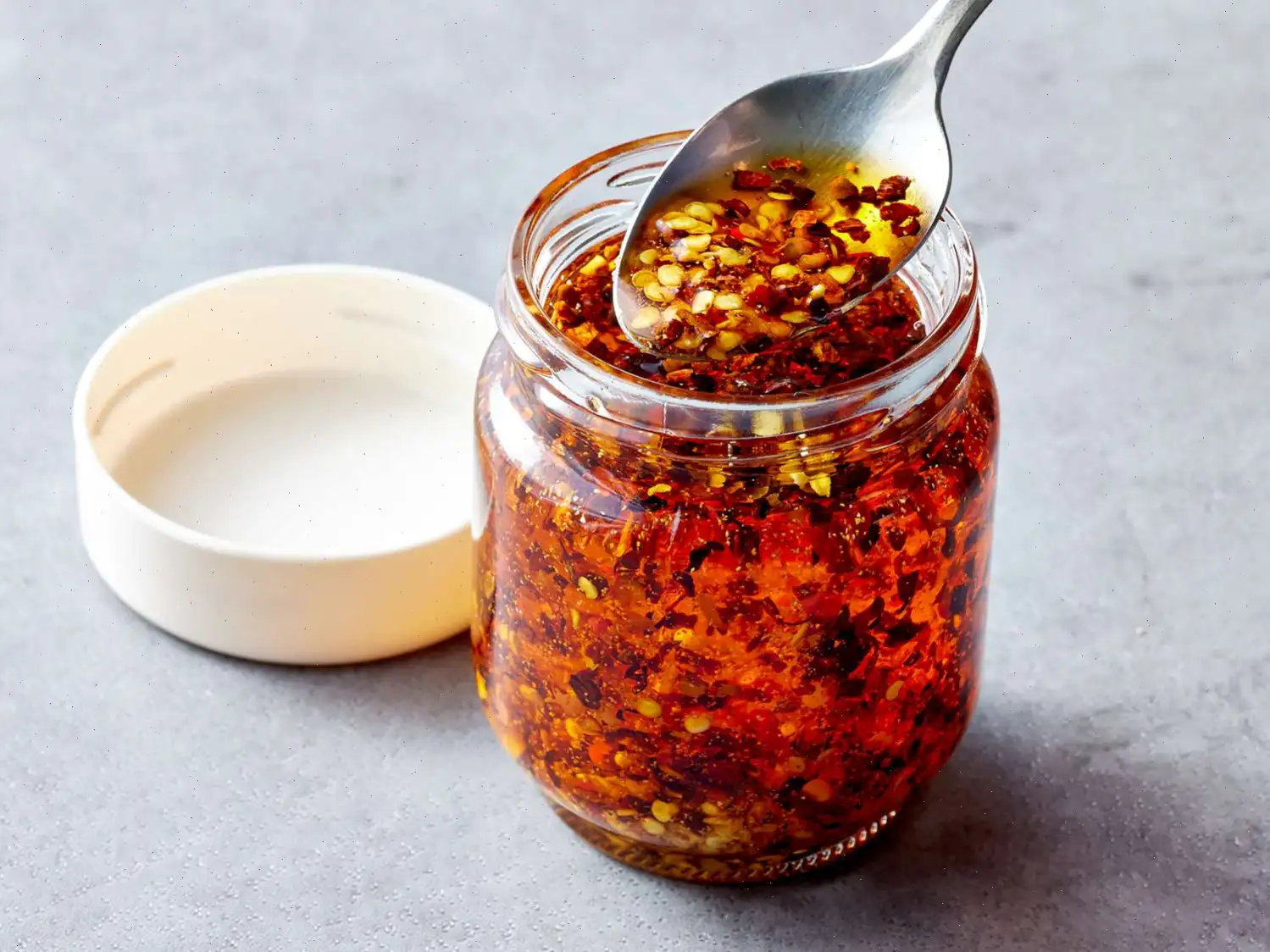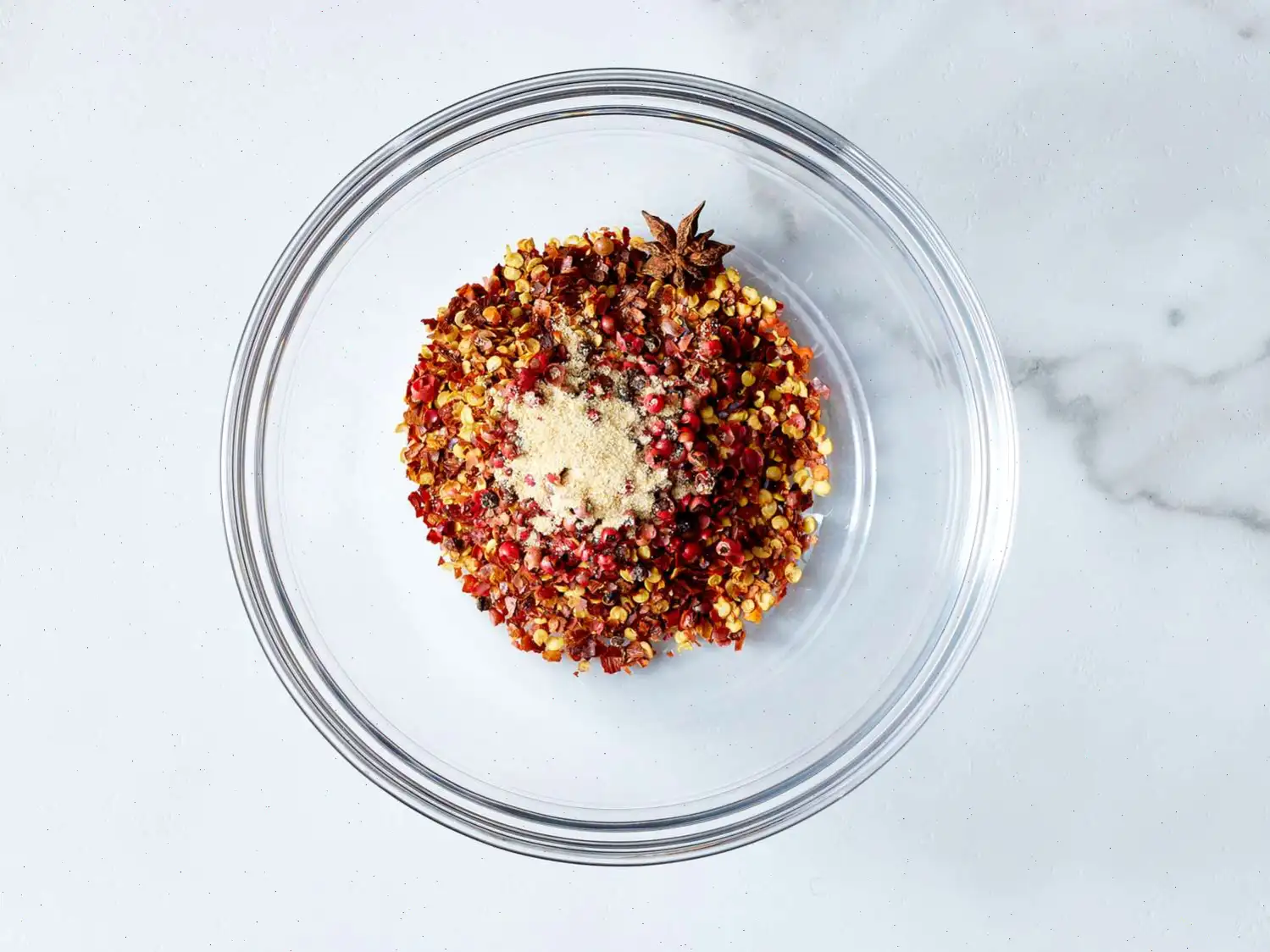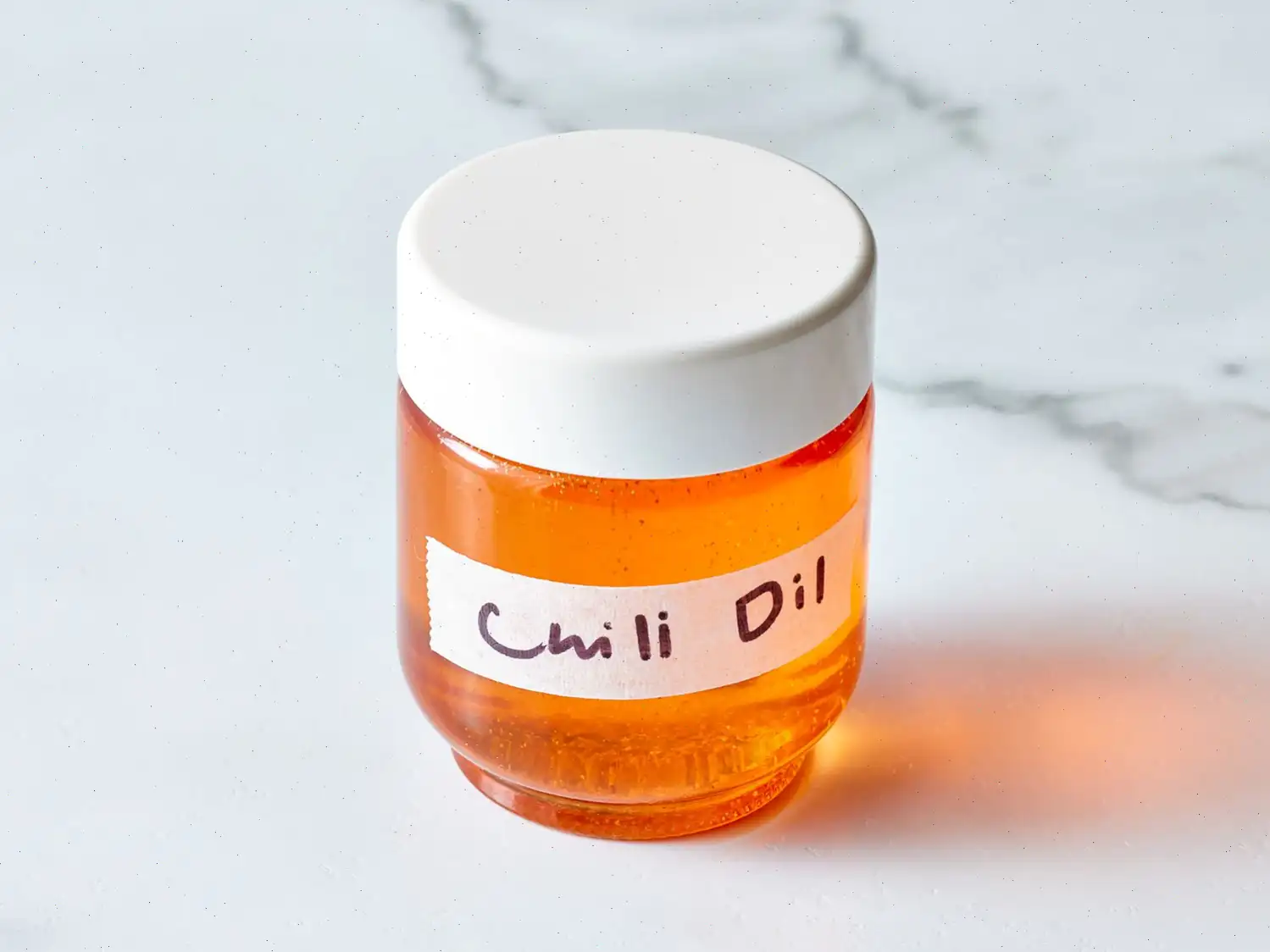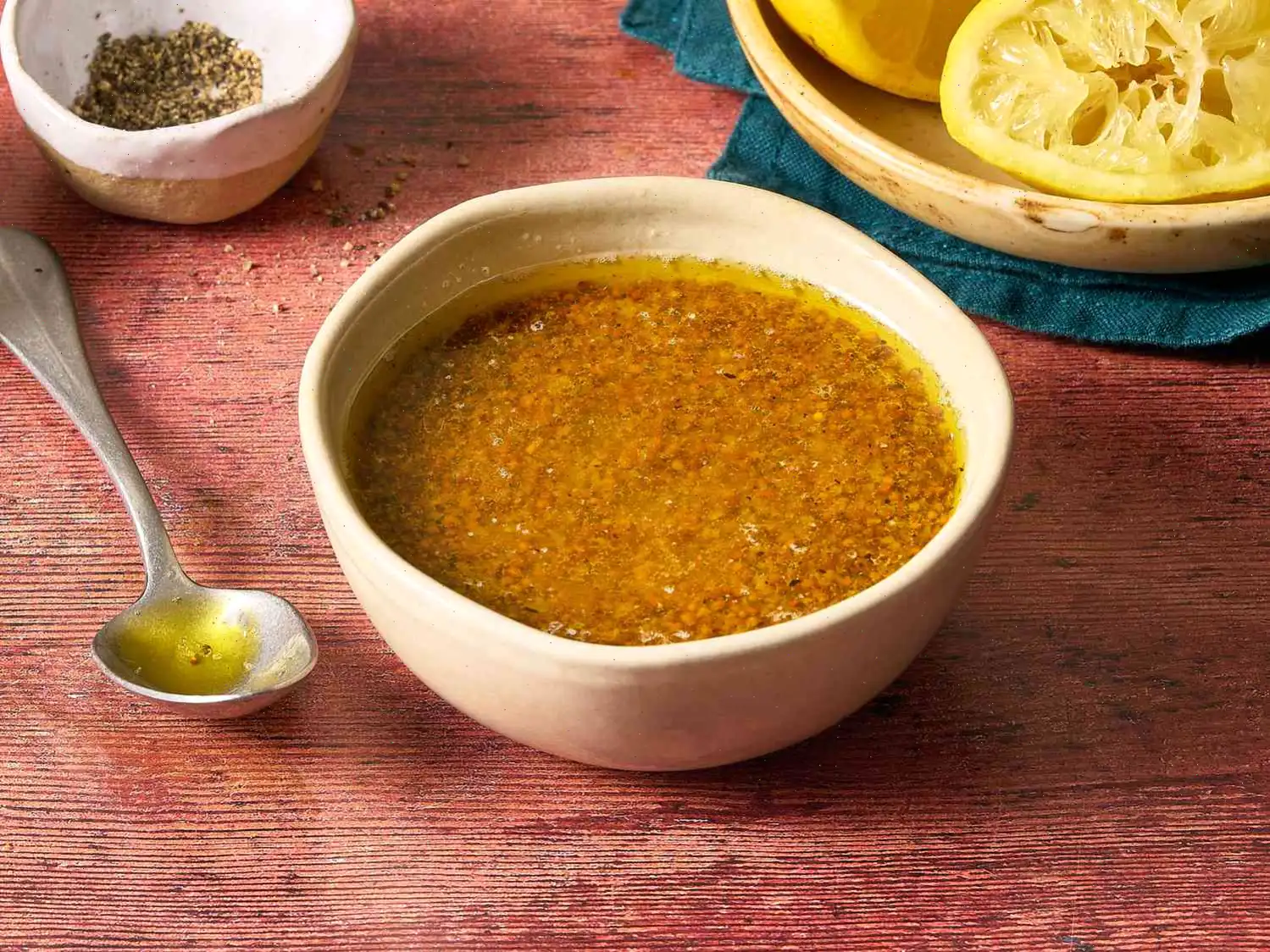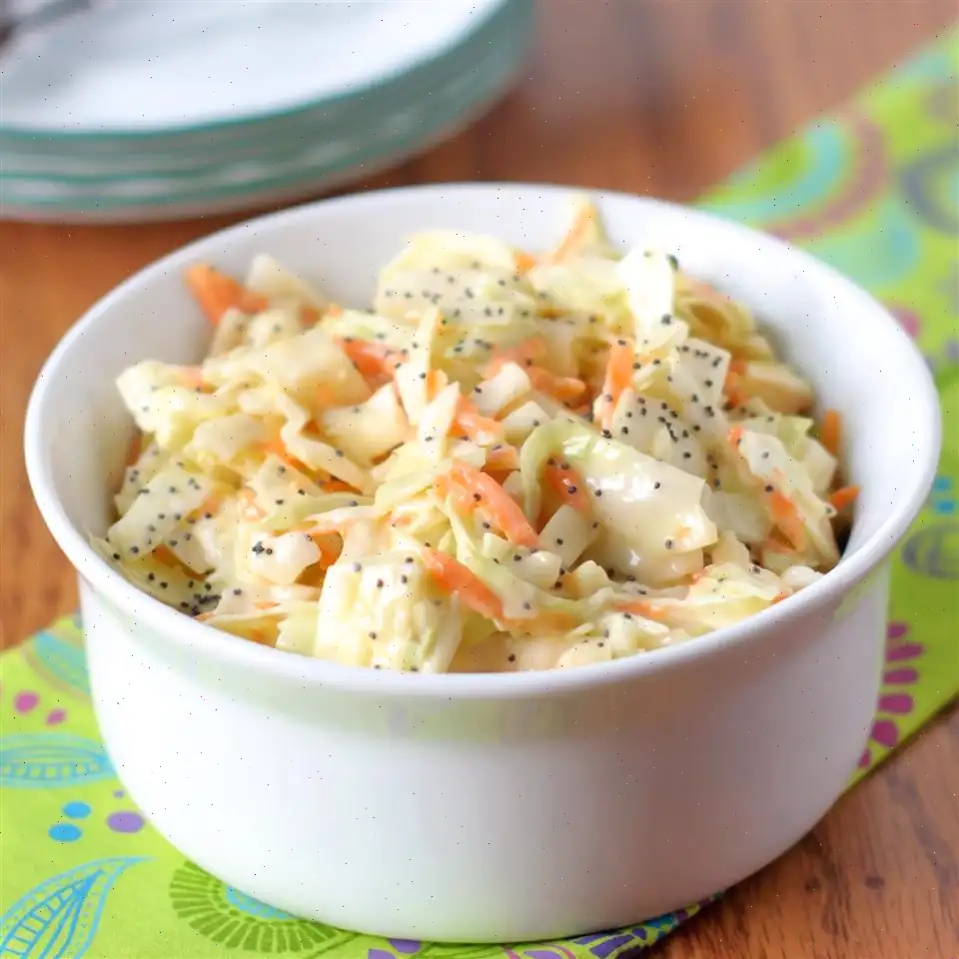
How to Make Chili Oil Recipe
Making chili oil at home is incredibly easy, and once you try it, you may find yourself using it more often than you think. Skip the store-bought version and make your own! Here's a simple, step-by-step guide on how to make this aromatic and flavorful chili oil.
Chili Oil Ingredients
- 3 tablespoons crushed red pepper
- 1 cinnamon stick
- 1 whole star anise
- 1 teaspoon crushed Szechuan peppercorns
- 1/2 teaspoon granulated garlic
- 1 cup neutral oil (peanut, vegetable, or canola oil)
How to Make Chili Oil
Follow these simple steps to create your homemade chili oil:
- Prepare the Ingredients: In a heatproof bowl, combine the crushed red pepper, cinnamon stick, star anise, crushed Szechuan peppercorns, and granulated garlic.
- Heat the Oil: In a small saucepan, heat the neutral oil over medium heat. The oil should reach a temperature between 225F (110C) and 250F (120C). This usually takes about 3 to 4 minutes. To check if its ready, drop a few flakes of crushed red pepper into the oil if they sizzle, its the right temperature.
- Pour the Oil Over the Spices: Once the oil is hot enough, carefully pour it over the spice mixture in the heatproof bowl. The oil will immediately start infusing with the flavors from the spices.
- Let It Cool: Allow the chili oil to stand and cool completely at room temperature, about 1 hour. This will allow the flavors to meld and intensify.
- Strain the Oil: If desired, strain the oil through a fine mesh sieve to remove the solid spices. This step is optional, depending on whether you prefer to keep the spices in the oil or not.
- Store the Oil: Transfer the strained or unstrained chili oil into an airtight and store it in the refrigerator for up to 6 months. Always use clean utensils when handling the oil to maintain its quality.
How to Use Chili Oil
Wondering how to incorporate your homemade chili oil into your dishes? Here are some delicious ideas:
- Marinate chicken, steak, or fish
- Use it in salad dressings for an extra kick
- Drizzle it over cooked eggs
- Use it as a hot sauce substitute
- Top blanched vegetables
- Serve it as a dip for crudit (try mixing with ricotta or sour cream for a creamy dip)
- Drizzle over chopped tomatoes and cucumbers with mint or green onion
- Toss with cold, cooked noodles
- Pour it over wontons or dumplings
- Drizzle over roasted or mashed sweet potatoes
Test Kitchen Tips
Here are some expert tips to make the process even easier:
- If you dont have Szechuan peppercorns, you can substitute with teaspoon crushed black peppercorns and teaspoon crushed coriander seeds.
- If you cant find crushed red pepper, gochugaru (Korean chili flakes) or Szechuan chili flakes work as great alternatives.
How Long Does Homemade Chili Oil Last?
When stored in an airtight in the refrigerator, your homemade chili oil can last up to 6 months. Always use clean utensils to avoid contamination and keep the oil fresh.
Nutrition Facts
| Nutrition Information | Per Serving |
|---|---|
| Calories | 142 |
| Total Fat | 16g |
| Saturated Fat | 2g |
| Cholesterol | 0mg |
| Sodium | 0mg |
| Total Carbohydrate | 1g |
| Dietary Fiber | 0g |
| Total Sugars | 0g |
| Protein | 0g |
| Vitamin C | 1mg |
| Calcium | 3mg |
| Iron | 0mg |
| Potassium | 27mg |

The Origins of Chili Oil
Chili oil has a rich history that spans centuries, with its roots tracing back to Chinese cuisine, particularly in the Sichuan province. Originally, it was used not just for flavor but also for its preservative qualities, as the spicy oil helped keep food fresh in humid climates. Over time, chili oil spread throughout Asia, becoming a staple in Chinese, Taiwanese, and even Japanese and Korean kitchens. Its intense heat and aromatic fragrance made it an essential ingredient in both home cooking and street food culture.
Regional Variations
Different regions have adapted chili oil to suit local tastes. In Sichuan, the oil is often infused with Szechuan peppercorns, creating the signature mala flavora combination of numbing and spicy heat. In Hunan cuisine, chili oil tends to be hotter and more vibrant, emphasizing red chili over aromatic spices. Japanese chili oil, known as rayu, is milder and often includes sesame seeds for a nutty undertone. Even within these regions, families and chefs add unique touches like garlic, ginger, or fermented beans to customize the flavor profile.
How It Differs from Similar Condiments
While there are many spicy oils worldwide, chili oil is distinct for its balance of heat, aroma, and complexity. Unlike hot sauces, which are liquid and often acidic, chili oil is an infusion of oil and spices, giving it a smooth, rich texture. Compared to chili pastes, which are thick and can contain fermented ingredients, chili oil is versatile and light, able to enhance dishes without overpowering them. Its unique combination of red pepper flakes, Szechuan peppercorns, and aromatics creates layers of flavor not found in other spicy condiments.
Where Chili Oil Is Typically Served
Chili oil is incredibly versatile and appears in a variety of settings. In Chinese cuisine, it is commonly drizzled over dumplings, noodles, and steamed vegetables. Street food vendors often offer it as a topping for wontons, rice dishes, and buns. At home, it is used as a marinade for meats, a dipping sauce, or even a finishing oil for salads and cold dishes. Its ability to enhance both cooked and raw foods has made it a beloved kitchen staple globally.
Interesting Facts About Chili Oil
- Chili oil can be stored for months without losing its flavor if kept in a cool, dark place.
- The mala sensation from Szechuan peppercorns is due to hydroxy-alpha-sanshool, a compound that produces a tingling, numbing feeling on the tongue.
- In traditional Chinese medicine, chili oil is believed to stimulate digestion and improve circulation.
- Many chefs experiment with infusions, adding ingredients like star anise, cinnamon, garlic, or even dried shrimp to create unique variations.
- Its popularity has spread worldwide, inspiring fusion dishes and even spicy condiments in Western cuisine.
You can listen to this recipe in AI audio format. Simply click the play button below to listen to the content in a format that suits you best. It’s a great way to absorb information on the go!



